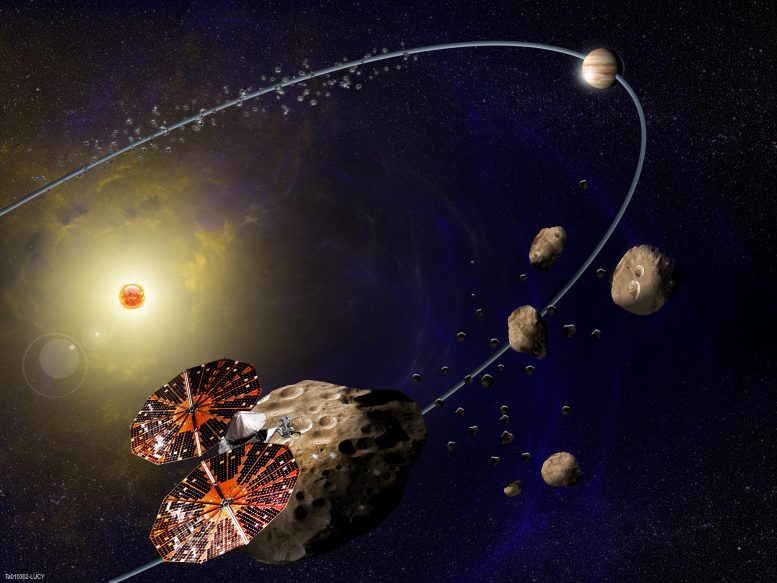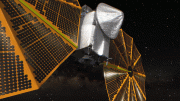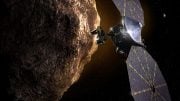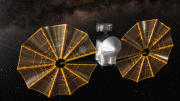
NASA’s Lucy mission, which launched on October 16, 2021, for the first reconnaissance of the Trojans, a population of primitive asteroids orbiting in tandem with Jupiter. In this artist’s concept (not to scale), the Lucy spacecraft is flying by Eurybates, one of the six diverse and scientifically important Trojans to be studied. Credit: Southwest Research Institute
NASA’s Lucy spacecraft observed the total lunar eclipse on May 15-16, 2022, from a unique vantage point, 64 million miles (100 million km) from the Earth, nearly 70% of the distance between the Earth and the Sun. Using its high-resolution panchromatic camera, L’LORRI, Lucy was able to watch as the Earth cast its shadow on the Moon. At this distance, the Earth and Moon appeared only 0.2 degrees apart to Lucy, having the same separation as a car’s tail-lights as viewed from a quarter-mile (400 m) away.
Credit: NASA/Goddard/APL/SwRI
In this timelapse video, the Earth is seen in the left (its rotation clearly visible) while the Moon (on the right, brightened sixfold to increase its visibility) disappears from view as it passes into the Earth’s shadow. The video covers a period of almost three hours, from 9:40 p.m. EDT (6:40 p.m. PDT) on May 15 to 12:30 a.m. EDT on May 16 (9:30 p.m. PDT on May 15). The observations ended before the Moon emerged from the shadow.
The Lucy spacecraft launched in October 2021. It is currently traveling back towards Earth for a gravity assist on October 16, 2022, to help propel it on its journey to the Trojan asteroids.








Be the first to comment on "NASA’s Lucy Spacecraft Observes Lunar Eclipse From 64 Million Miles Away"